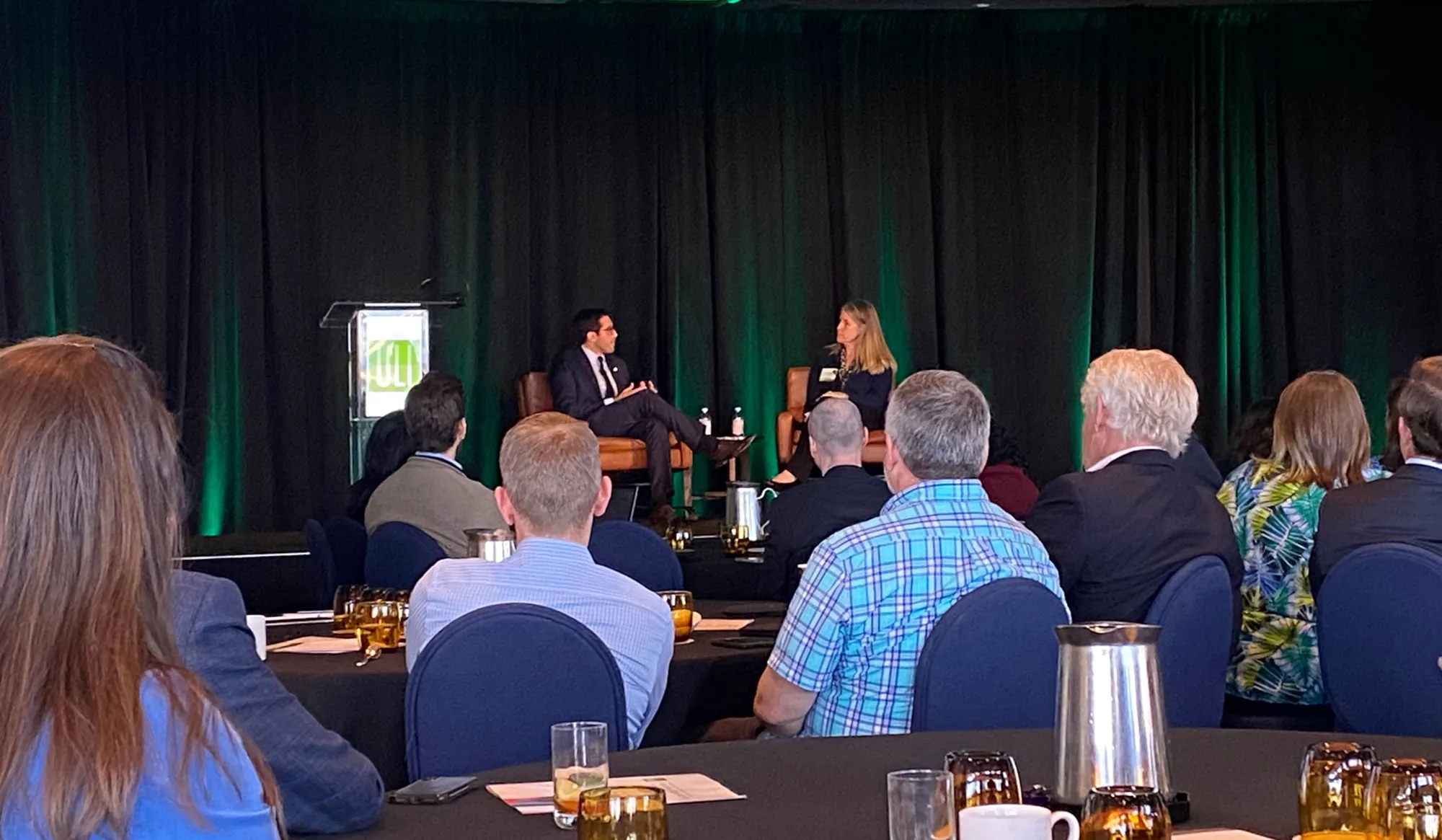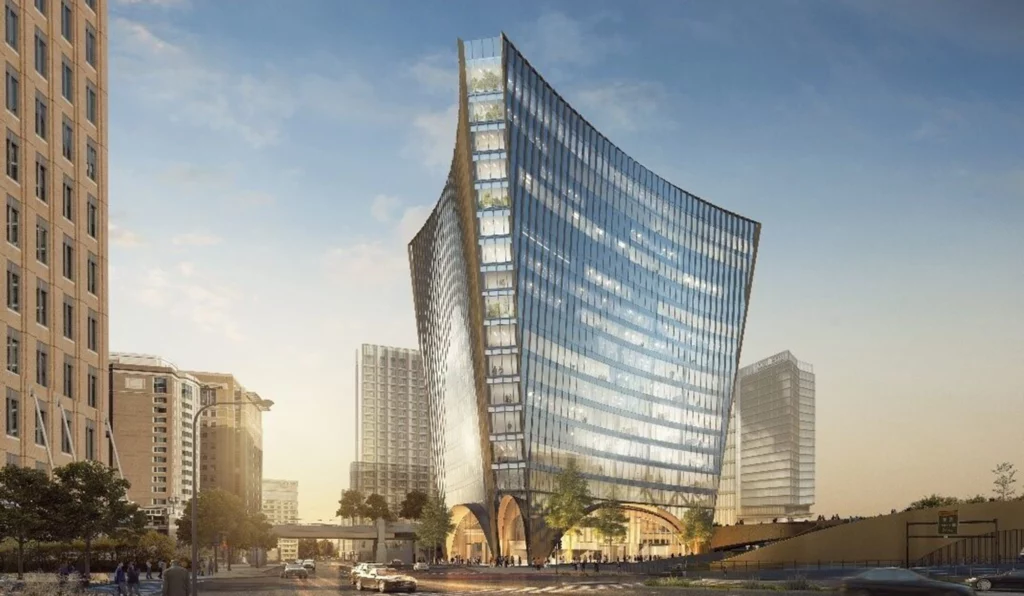ULI Housing Opportunity 2020 Review

Day 1
The Housing Opportunity conference began with Tim Sullivan, managing principal at Meyers Research, offering important data and showcasing graphs to explain the State of the US Housing Market. One piece of advice that resonated with me was that builders should listen to millennials. During the next few years, millennials will be driving the housing market and need to be taken into consideration when developers are considering new projects. Perhaps, using smart design, building smaller units that feel spacious “enough”. Targeting not only new families but also single individuals who don’t need more than two bedrooms. This way, units can be more affordable and attract more new home buyers.
Another key takeaway from the first day is how developers and municipalities come together to discuss ways in which they can enhance their efforts locally to create a product that addresses the needs of the communities. More importantly, developers are working to increase affordable housing without cutting ROI for their investors.
Developers, like Bob Youngentob, CEO at EYA, discuss ways in which they lower their cost to build without downgrading quality for their homes. He gave many examples of subtle ways in which they can reduce the cost, but still offer great quality units.
On a related topic, Alfonso Costa, the Deputy Chief of Staff, US Dept of Housing and Urban Development, had a great Fireside Chat with interviewer Gwyneth Coté, President, ULI Americas, to inform the audience on new and existing programs HUD is working on to assist with affordable housing under the current administration. His background in Real Estate, while working with his father in his CRE firm, has created a foundation for his initiatives that involved listening to the community and assisting in ways that unite people.
Day 2
Day two of ULI Housing Opportunity 2020 brought up discussion topics like Housing of the Future, Home Design Solutions for Individuals on the Autism Spectrum, Transitioning from Homelessness, Building for Families and Seniors, and Living with Water. Experts on the subjects talked about projects they have worked on or are currently working on that address some of these issues.
During the Housing of the Future session, Andrew Burnett from Stantec described how they are creating units that could easily be switched between two to three bedrooms to make the construction more sustainable. He emphasizes that since new construction is more costly, they are finding ways in which the new construction can last longer and be more flexible to adjust to the needs of the communities. However, he points out that more often than not, he hears developers saying, “that’s cool, but don’t experiment with my project.” As developers continue to explore new alternatives for smart buildings, Burnett hopes that more developers are opened to explore some of these options.
During the same session, when asked “what are the emerging technologies to watch in new construction,” Benjamin Kasdan from KTGY Architecture + Planning quickly said “parking”. As parking is number two on the list of what residents want in their buildings, he noted that alternative parking systems need to be created to minimize special impact within the construction. Residents want to park their vehicle and if you don’t provide the space, they will look for another building offering it.
In a subsequent session, Denise Resnik from First Place and Laura Rossbert from Shopworks Architecture discussed how human-centered principles are helping create more inclusive communities while addressing the housing needs among some of our most challenging populations. Rossbert, concentrates on trauma-informed design in housing, caused by homelessness. On one of their research discoveries, Rossbert noticed that homeless individuals transitioning to living in a house preferred blackout curtains. That’s because they have lived through trauma and dark rooms help them feel more comfortable. On a similar note, Resnik created a residential community for adults with autism called FirstPlace. FirstPlace explores the need for human touch and how technology satisfies that need. She emphasized that technology will not fully replace the human touch that some of the residents still seek.
On the panel talking about Building for Families and Seniors, Patricia Will from Belmont Senior Living discusses how access to amenities that one enjoys earlier in life, become more important later in life. This is due to individuals wanting to feel connected to one another. Amenities such as common areas, fitness rooms, and technology are still high on the list for senior housing. She pointed out how as she walks around some of their projects, she encounters seniors with Ipads and laptops with high-speed wifi connection. Fitness is also a very crucial part for them to regain an upbeat attitude.
Lastly, during the final session of the day “Living with Water” panelists Jacqueline Gonzalez Touzet from Touzet Studio, Nicholas Iselin from Lendlease, Thomas Mooney from Planning Department for the City of Miami Beach, and Laurie Schoeman from Enterprise Community Partners, Inc. discussed many weather-related aspects that affect various US cities from Miami to Boston. Nicholas introduced the Clippershift Wharf in East Boston that was created with a topography that is very different from any other project on the Boston shore. Jacqueline Gonzalez Touzet from Touzet Studio talked about various projects they are working on that address additional future issues that climate change might present. This includes raised ground floors that hold water cisterns to collect rainwater through specialized planted trees.
Overall, it was a great experience to learn from experts covering affordable housing, senior living, inclusion in new construction, and building with resilience in mind. Attending events such as the ULI Housing Opportunity conference, allows our team to stay at the forefront of trends and topics in the real estate industry. We look forward to attending next year’s conference in Atlanta.



